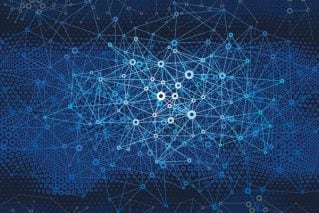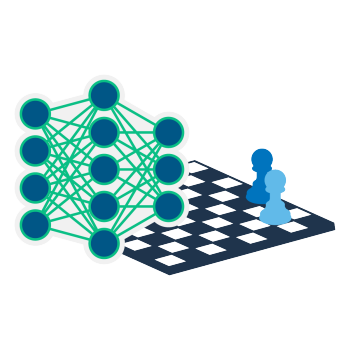ANALYTICS INSIGHTS
Transform data into the best decisions
Recent Analytics Insights
-
 What is AI modeling?AI modeling involves creating programs that use one or a combination of algorithms to allow computers to think, learn and predict outcomes. Much like a human brain, AI models absorb input data – numbers, texts, images, video, sound – to learn how to predict outcomes or solve specific tasks without explicit instructions at every step.
What is AI modeling?AI modeling involves creating programs that use one or a combination of algorithms to allow computers to think, learn and predict outcomes. Much like a human brain, AI models absorb input data – numbers, texts, images, video, sound – to learn how to predict outcomes or solve specific tasks without explicit instructions at every step.
-
 Understanding digital twin technologyLearn how digital twin technology can change industries from health care to manufacturing, and shape the future of data modeling and process improvements.
Understanding digital twin technologyLearn how digital twin technology can change industries from health care to manufacturing, and shape the future of data modeling and process improvements.
-
 What is synthetic data? And how can you use it to fuel AI breakthroughs?There's no shortage of data in today's world, but it can be difficult, slow and costly to access sufficient high-quality data that’s suitable for training AI models. Learn why synthetic data is so vital for data-hungry AI initiatives, how businesses can use it to unlock growth, and how it can help address ethical challenges.
What is synthetic data? And how can you use it to fuel AI breakthroughs?There's no shortage of data in today's world, but it can be difficult, slow and costly to access sufficient high-quality data that’s suitable for training AI models. Learn why synthetic data is so vital for data-hungry AI initiatives, how businesses can use it to unlock growth, and how it can help address ethical challenges.
-
 Big data in government: How data and analytics power public programsBig data in government is vital when analyzed and used to improve the outcomes of both public and private sector programs – from emergency response to workforce effectiveness. The vast volumes of data created every day are the foundation of insightful changes for government agencies across the globe.
Big data in government: How data and analytics power public programsBig data in government is vital when analyzed and used to improve the outcomes of both public and private sector programs – from emergency response to workforce effectiveness. The vast volumes of data created every day are the foundation of insightful changes for government agencies across the globe.
-
 Unlocking a strategic approach to data and AIAI is only as good as the data that powers it – this is a fundamental truth about data and AI that defines the limits of what’s possible with artificial intelligence. It may seem surprising, but it's rarely a bad algorithm or a bad learning model that causes AI failures. It's not the math or the science. More often, it's the quality of the data being used to answer the question.
Unlocking a strategic approach to data and AIAI is only as good as the data that powers it – this is a fundamental truth about data and AI that defines the limits of what’s possible with artificial intelligence. It may seem surprising, but it's rarely a bad algorithm or a bad learning model that causes AI failures. It's not the math or the science. More often, it's the quality of the data being used to answer the question.
-
 AI anxiety: Calm in the face of changeAI anxiety is no joke. Whether you fear jobs becoming obsolete, information being distorted or simply missing out, understanding AI anxiety can help you conquer it.
AI anxiety: Calm in the face of changeAI anxiety is no joke. Whether you fear jobs becoming obsolete, information being distorted or simply missing out, understanding AI anxiety can help you conquer it.
-
 Fraud detection and machine learning: What you need to knowMachine learning and fraud analytics are critical components of a fraud detection toolkit. Discover what you’ll need to get started defending against fraud – from integrating supervised and unsupervised machine learning in operations to maintaining customer service.
Fraud detection and machine learning: What you need to knowMachine learning and fraud analytics are critical components of a fraud detection toolkit. Discover what you’ll need to get started defending against fraud – from integrating supervised and unsupervised machine learning in operations to maintaining customer service.
-
What are AI hallucinations?Separating fact from AI-generated fiction can be hard. Learn how large language models can fail and lead to AI hallucinations – and discover how to use GenAI responsibly.
-
What are chatbots?Chatbots are a form of conversational AI designed to simplify human interaction with computers. Learn how chatbots are used in business and how they can be incorporated into analytics applications.
-
A data scientist’s views on data literacyData literacy is a social imperative – and understanding data and data analysis is critical for being a responsible citizen. Get a data scientist and teacher's perspective on the value of having foundational knowledge so you can more easily tell data facts from data fiction.
-
Shut the front door on insurance application fraud!Fraudsters love the ease of plying their trade over digital channels. Smart insurance companies are using data from those channels (device fingerprint, IP address, geolocation, etc.) coupled with analytics and machine learning to detect insurance application fraud perpetrated by agents, customers and fraud rings.
-
Public health infrastructure desperately needs modernizationPublic health agencies must flex to longitudinal health crises and acute emergencies – from natural disasters like hurricanes to events like a pandemic. To be prepared, public health infrastructure must be modernized to support connectivity, real-time data exchanges, analytics and visualization.
-
Key questions to kick off your data analytics projectsThere’s no single blueprint for starting a data analytics project. Technology expert Phil Simon suggests these 10 questions as a guide.
-
Analytics tackles the scourge of human traffickingVictims of human trafficking are all around us. From forced labor to sex work, modern-day slavery thrives in the shadows. Learn why organizations are turning to AI and big data analytics to unveil these crimes and change future trajectories.
-
10 ways analytics can make your city smarter From child welfare to transportation, read 10 examples of analytics being used to solve problems or simplify tasks for government organizations.
-
Analytics: A must-have tool for leading the fight on prescription and illicit drug addictionStates and MFCUs now have the analytics tools they need to change the trajectory of the opioid crisis by analyzing data and predicting trouble spots – whether in patients, prescribers, distributors or manufacturers. The OIG Toolkit with free SAS® programming code makes that possible.
-
SAS CIO: Why leaders must cultivate curiosity in 2021With the change we’re all facing this year, CIOs should be counting on curiosity to play a crucial role in how we’re going to meet the challenges that lie ahead. From the moment COVID-19 hit, our IT organization has relied on curiosity – that strong desire to explore, learn, know - to fuel the urgent changes required. And it’s curiosity that will enable us to meet the needs of the future of work post-pandemic.
-
Load forecasting: Ensuring supply meets energy demandLoad forecasting helps energy suppliers meet demand for residential and commercial customers. As renewable energy resources increase, the necessity for a technology platform that adapts to load forecasting requirements becomes crucial.
-
Five ways your organization can enhance resilience for years to comeInnovation, agility and customer-centricity frequently top the list of companies’ strategic objectives, and now the most urgent priority is resilience. Given this new urgency, it’s worth taking a close look at the underpinnings of resilience and how they could be applied in any industry. This article explores how analytics can help boost resilience and includes key elements to keep your organization resilient.
-
Resilience in the face of unpredictabilityUnpredictability can “shatter and reshape” a society. And in these unpredictable times, it is important to remain resilient and be prepared to bounce back. This article explores what it truly means to be resilient, how to build it, and how analytics can help you act when your resilience is tested.
Send SAS Insights straight to your inbox




